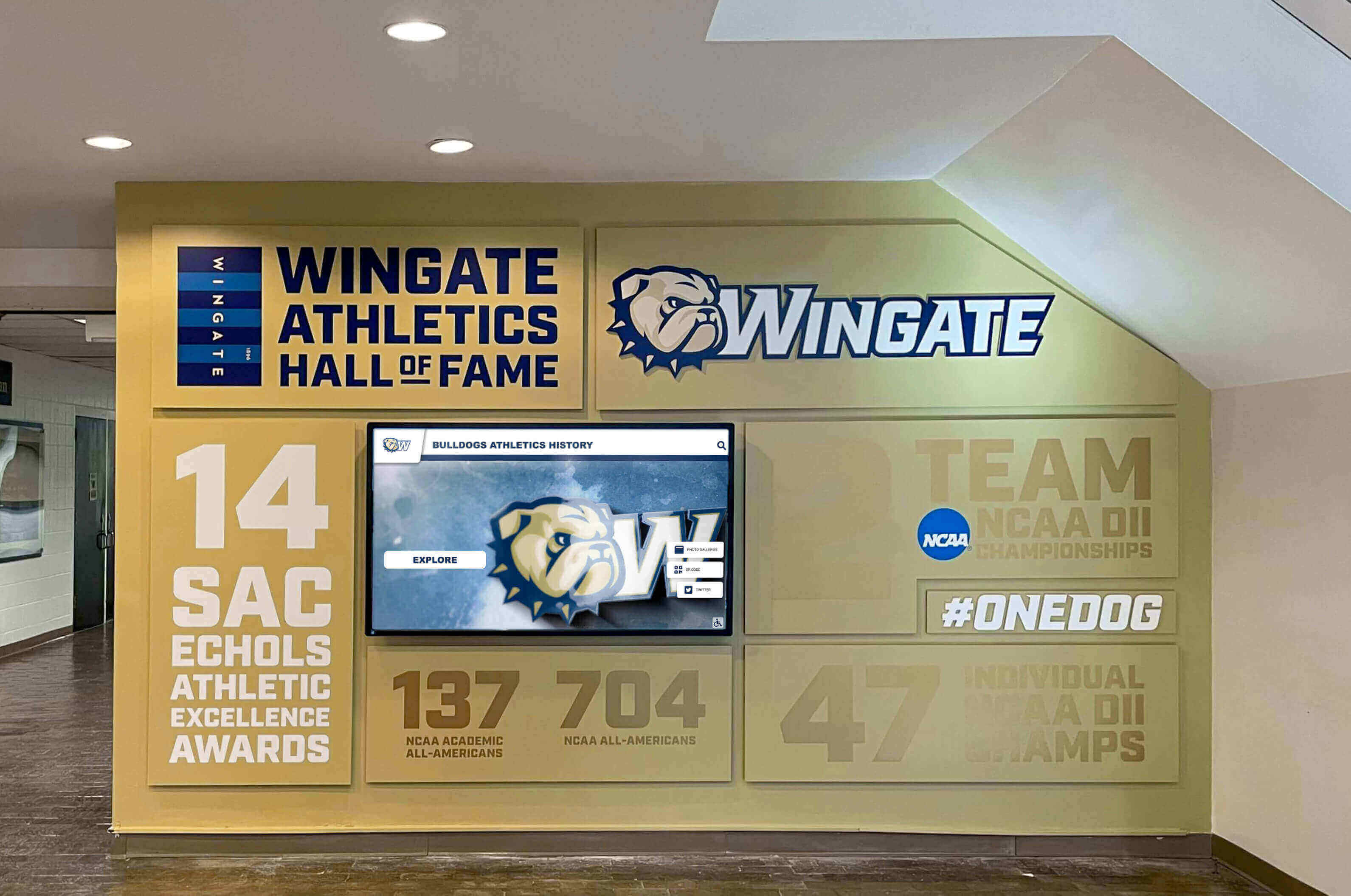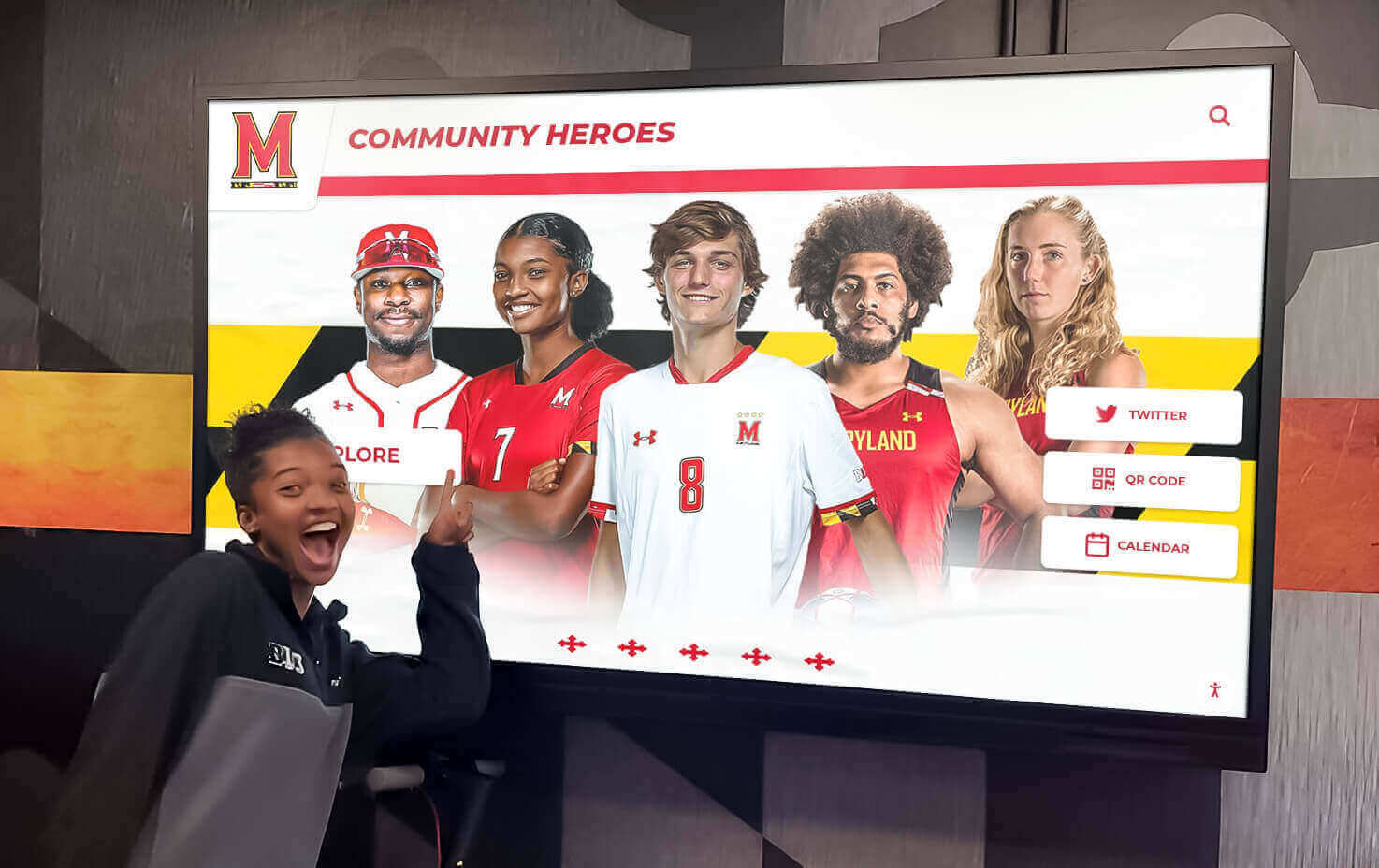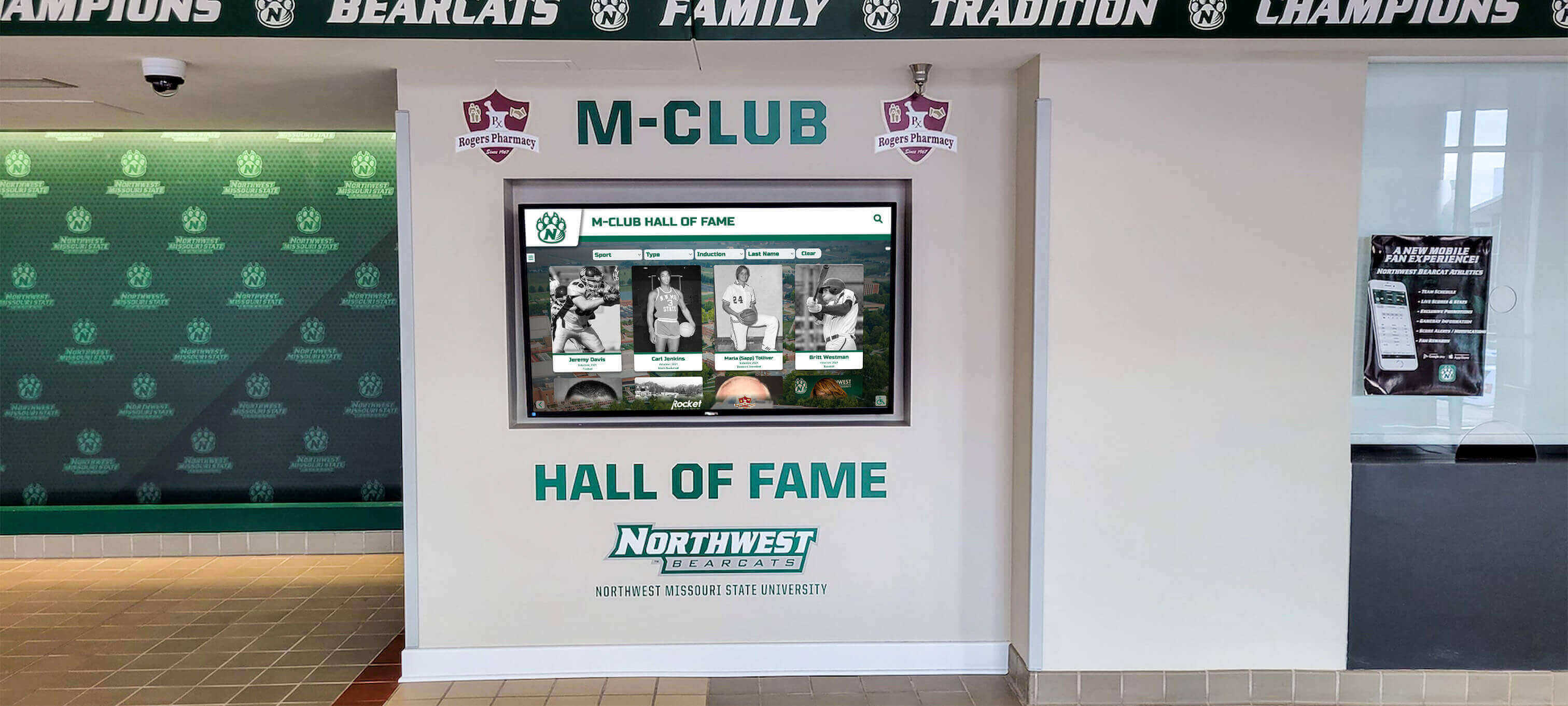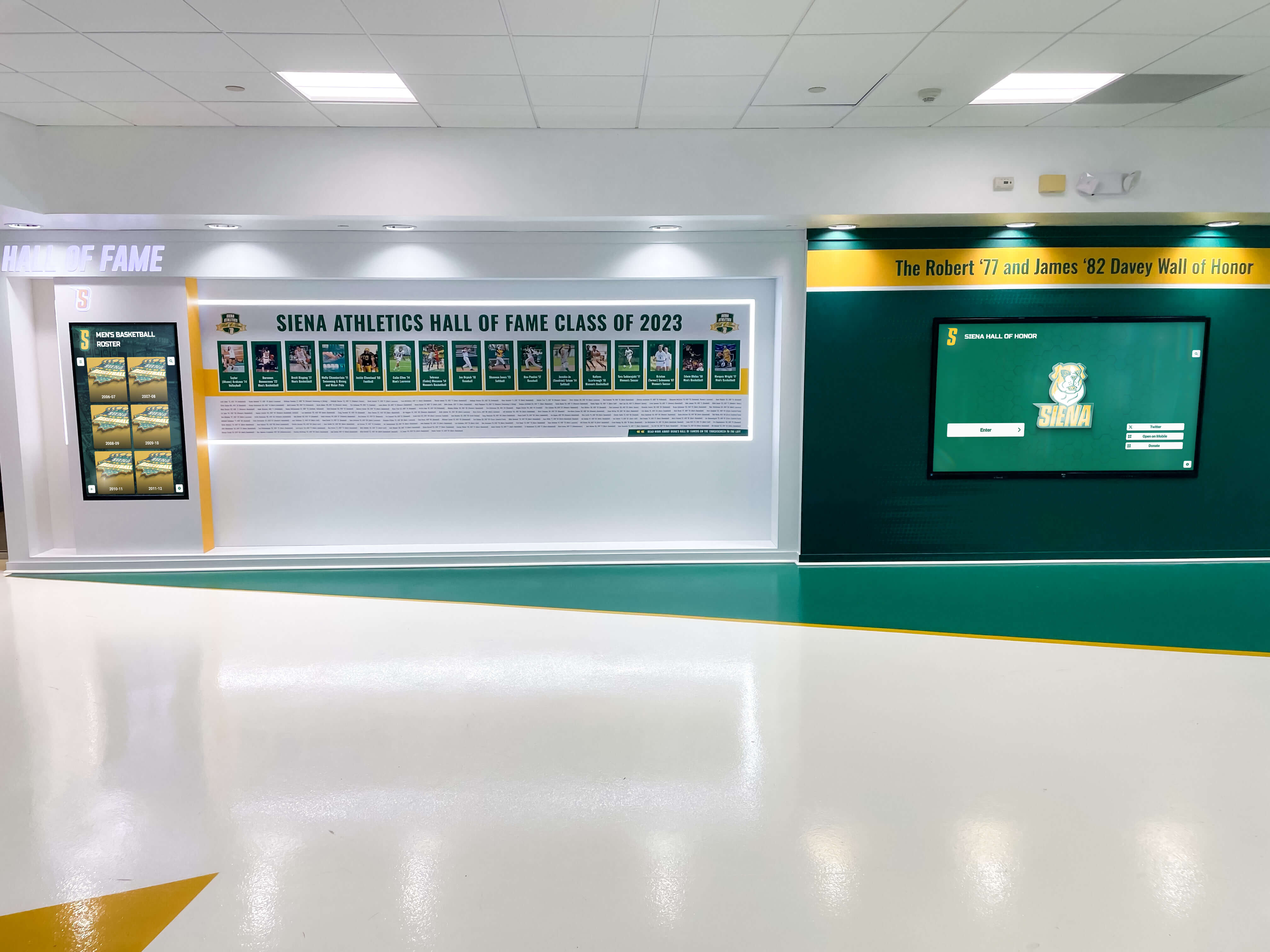Key Takeaways
Plan a memorable hall of fame induction ceremony with our complete guide. Learn hybrid event strategies, technology integration, timeline planning, and best practices for recognition events.
Understanding Modern Hall of Fame Induction Ceremonies
Hall of fame induction ceremonies have evolved significantly beyond traditional banquet dinners. Modern recognition events blend in-person experiences with digital reach, creating inclusive celebrations that honor achievement while engaging broader communities.
The Evolution of Recognition Ceremonies
Traditional hall of fame ceremonies typically followed a standard format: formal dinner, speeches, plaque presentations, and perhaps a reception. While these elements remain valuable, contemporary ceremonies incorporate:
Expanded Participation: Virtual attendance options allow inductees unable to travel, distant alumni, and broader community members to participate meaningfully. Family members across the country can witness their loved one’s recognition without travel burdens.
Multimedia Storytelling: Video tributes, documentary-style features, and digital presentations bring honoree stories to life in ways static speeches cannot achieve. These productions become lasting legacy content that extends ceremony impact long after the event concludes.

Technology Integration: Solutions like Rocket Alumni Solutions enable seamless connection between physical recognition displays and ceremony presentations. Content created for the event automatically populates campus displays, websites, and mobile apps—maximizing staff efficiency while ensuring consistent recognition across all touchpoints.
Extended Engagement: Rather than single-evening events, modern ceremonies often anchor multi-day celebrations including receptions, campus tours, class reunions, and networking opportunities. The induction becomes a centerpiece of larger homecoming or alumni weekend programming.
Year-Round Recognition: Digital displays featuring inductees remain visible daily on campus, transforming one-night recognition into ongoing celebration that inspires current students and maintains honoree visibility throughout the year.

Types of Hall of Fame Induction Ceremonies
Different formats serve different institutional needs and contexts:
Traditional In-Person Ceremonies: Formal events held in distinguished venues like ballrooms, theaters, or gymnasiums. These work best for institutions with strong local alumni populations and established ceremony traditions.
Hybrid Ceremonies: Combine in-person gatherings with robust virtual attendance options. The majority of participants attend physically while virtual attendees experience high-quality streaming, interactive elements, and meaningful participation opportunities. This format has become increasingly common, offering flexibility while maintaining in-person energy.
Virtual-Only Ceremonies: Entirely online events that maximize accessibility and reduce costs. While lacking in-person atmosphere, well-executed virtual ceremonies reach global audiences and can be surprisingly engaging with proper production values and interactive elements.
Multi-Location Celebrations: Some organizations host simultaneous gatherings in multiple cities, connected through technology. This approach works well for institutions with geographically dispersed alumni concentrations.
Anchor Events Within Larger Programming: Induction ceremonies positioned within homecoming weekends, reunions, or athletic events. This leverages existing attendance while providing additional programming that attracts more participants. For schools planning comprehensive recognition programs, exploring hall of fame comprehensive guides provides valuable context for integrating ceremonies into broader recognition strategies.
Planning Timeline: 12 Months to Ceremony Success
Successful hall of fame induction ceremonies require significant advance planning. This timeline provides a structured framework adaptable to your institution’s needs and resources.
12-9 Months Before: Foundation and Selection
Select Inductees
Complete nomination review and selection committee decisions for the upcoming class
Secure Date & Venue
Confirm ceremony date and book appropriate venue with technology capabilities
Notify Inductees
Contact honorees privately to confirm acceptance and participation preferences
Form Planning Committee
Assemble team responsible for execution including staff, volunteers, and student representatives
Establish Budget
Determine available resources and funding sources for all ceremony elements
Technology Assessment
Evaluate technical requirements for hybrid/virtual components if applicable
Key Actions:
Establish clear committee structure with defined roles for program coordination, communications, technology, registration, hospitality, and recognition production. Early role clarity prevents confusion and ensures accountability as planning intensifies.
Determine ceremony format based on inductee locations, institutional resources, and community preferences. If multiple inductees reside far from campus, hybrid formats become essential rather than optional.
Begin preliminary budget development understanding that detailed estimates require vendor conversations happening in subsequent months. Account for venue, food/beverage, technology, recognition items, marketing, and contingency funds.
9-6 Months Before: Program Development
Content Creation Begins: Gather biographical information, photos, videos, and achievement details from inductees. Create comprehensive questionnaires requesting family information, career highlights, memorable stories, and preferred ceremony participation levels.
Some inductees eagerly provide extensive material; others require multiple follow-ups. Assign committee member dedicated to inductee communication ensuring consistent, personal contact throughout the process.
Program Structure Design: Outline ceremony flow considering pacing, variety, and emotional impact. Effective ceremonies balance formal recognition with authentic storytelling, avoiding monotonous plaque presentations while maintaining appropriate gravitas.
Technology Vendor Selection: If incorporating hybrid or virtual elements, research and contract with appropriate vendors. Consider:
- Professional videography for tribute videos
- Livestreaming platform and production team
- Audio-visual equipment rental if venue lacks capabilities
- Digital recognition display updates post-ceremony
Modern solutions like Rocket Alumni Solutions streamline post-ceremony recognition by automatically updating campus displays with new inductee profiles, eliminating duplicate content entry while ensuring immediate visibility.

Marketing and Communications Launch: Begin promotional campaign through:
- Save-the-date announcements to target audiences
- Website dedicated landing page with inductee announcements
- Social media campaign introducing each honoree
- Email marketing to alumni, donors, and community
- Media outreach to local newspapers and outlets
Stagger inductee announcements across several weeks, dedicating focused attention to each honoree rather than overwhelming audiences with simultaneous introductions.
6-3 Months Before: Production and Logistics
Tribute Content Production: Produce video tributes, presentation materials, and multimedia elements. Professional-quality videos typically require:
- Scriptwriting based on biographical information
- Interview scheduling and recording if including testimony
- Historical photo and video gathering and digitization
- Professional editing and production
- Review cycles with inductees or families for accuracy
Budget 6-8 weeks minimum for video production from initial scripting through final approval. High-quality tribute videos become treasured keepsakes for families while serving as compelling ceremony centerpieces.
Registration System Launch: Open registration for ceremony attendance using online platforms enabling:
- Ticket sales with multiple pricing tiers
- Meal selection and dietary restriction collection
- Attendee information gathering
- Payment processing
- Automated confirmation and reminder communications
Printed Materials and Recognition Items: Order physical recognition elements well in advance:
- Plaques, trophies, or custom recognition awards
- Printed programs for ceremony attendees
- Table decorations and signage
- Special inductee gifts or commemorative items
- Campus display components
Production timelines for engraved plaques can extend to 6-8 weeks, requiring early ordering to avoid last-minute pressure.
Rehearsal and Run-of-Show Planning: Develop detailed minute-by-minute ceremony timeline including:
- Speaker introductions and remarks
- Video presentation cues and timing
- Inductee recognition sequence
- Musical interludes or entertainment
- Technology transitions
- Contingency planning for delays or issues
Volunteer Recruitment and Training: Identify and train volunteers for:
- Registration and check-in
- Ushering and seating coordination
- Technology assistance for virtual attendees
- Photography coverage
- Reception hospitality
- Parking and wayfinding

3 Months to Event Day: Final Execution
Communications Intensification: Increase promotional frequency with:
- Registration deadline reminders
- Featured inductee stories and accomplishments
- Behind-the-scenes content building anticipation
- Event logistics details for attendees
- Virtual participation instructions
Sponsor Recognition Planning: If corporate or individual sponsors support the ceremony, ensure proper recognition through:
- Logo placement in programs and signage
- Verbal acknowledgment during ceremony
- Social media recognition
- Display sponsorship on campus recognition systems
Technology Testing: Conduct thorough testing sessions including:
- Livestream quality and bandwidth verification
- Audio-visual equipment confirmation
- Virtual platform familiarization for presenters
- Backup system preparation
- Emergency contingency protocols
Schedule full technical rehearsal one week before ceremony, simulating actual event conditions with speakers, technology, and timing.
Final Confirmations: Two weeks before ceremony, confirm:
- Final attendance counts for catering
- All vendor deliverables and timing
- Speaker preparedness and speech timing
- Inductee travel arrangements and accommodation
- Volunteer assignments and schedules
- Media attendance and access requirements

Budget Planning: Understanding Ceremony Costs
Hall of fame induction ceremony budgets vary dramatically based on inductee numbers, venue selection, production values, and format choices. Understanding typical cost categories enables realistic planning.
Budget Categories and Typical Ranges
Venue and Hospitality ($3,000-$25,000+):
- Venue rental fees (free for on-campus spaces to $5,000+ for premium locations)
- Catering for dinner or reception ($35-$150 per person)
- Bar service (cash bar vs. hosted options)
- Table decorations and centerpieces
- Linens, chairs, and facility setup if not included
For 150-person attendance, hospitality alone can range from $5,000-$22,500 depending on sophistication and location.
Recognition Items ($500-$5,000):
- Engraved plaques or trophies for inductees ($100-$500 each)
- Campus digital trophy display components for permanent recognition
- Commemorative gifts for honorees
- Printed programs for attendees ($2-$8 per program)
- Certificates, custom artwork, or framed photos
Production and Technology
($2,000-$15,000+)
- Professional videography and photography
- Tribute video production ($500-$2,000 per video)
- Livestreaming platform and production
- Audio-visual equipment rental
- Presentation design and materials
- Post-event video editing and delivery
Marketing and Promotion
($500-$3,000)
- Digital advertising campaigns
- Printed invitations and mailings
- Promotional materials and signage
- Website development or updates
- Media relations efforts
- Social media promoted content
Staffing and Support
($0-$8,000+)
- Event coordinator professional fees
- Technology support personnel
- Security or event staff
- Parking attendants
- Professional MC or host (optional)
Miscellaneous Expenses
($500-$2,000)
- Honoree travel reimbursement
- Hotel accommodation for inductees
- Entertainment or musical performance
- Insurance or permits
- Contingency fund (10% of total budget)
Total Budget Scenarios:
Basic Ceremony (50-75 attendees, on-campus, minimal production): $5,000-$12,000 total investment
Mid-Range Ceremony (100-150 attendees, off-campus venue, professional video): $15,000-$35,000 total investment
Premium Ceremony (200+ attendees, high-end venue, full production, hybrid format): $40,000-$75,000+ total investment
Revenue Sources to Offset Costs
Many institutions offset ceremony expenses through:
Ticket Sales: Charge admission ranging from complimentary for inductees and families to $50-$150 per attendee. Tiered pricing structures offer premium options (reserved seating, VIP reception) alongside standard admission.
Sponsorships: Secure corporate or individual sponsors supporting the event. Sponsorship levels ($500-$10,000+) provide recognition while offsetting specific expense categories like video production or reception costs.
Fundraising Integration: Position ceremonies within broader fundraising initiatives. Alumni attending ceremonies represent engaged prospects for giving solicitations timed around the event.
Institutional Budget Allocation: Many schools budget annually for recognition ceremonies as standard advancement or alumni relations expenses, viewing investment as strategic community engagement rather than revenue-generating events.
Technology Integration for Hybrid and Virtual Ceremonies
Technology transforms hall of fame ceremonies from single-evening events into extended engagement opportunities reaching broader audiences while creating lasting legacy content.
Essential Technology Components
Livestreaming Platform Selection: Choose platforms based on expected attendance, interactivity requirements, and budget:
Zoom Webinar: Accommodates large audiences, enables Q&A and chat, familiar to most users, cost-effective. Best for ceremonies prioritizing accessibility over production polish.
Vimeo Livestream: Higher production quality, professional appearance, robust streaming infrastructure, customizable player. Ideal for institutions wanting premium presentation.
YouTube Live: Free option reaching unlimited audiences, archival hosting included, searchable and shareable. Consider for maximum accessibility despite less control over viewing experience.
Dedicated Event Platforms: Services like Hopin or Remo offer comprehensive event experiences including networking, exhibitor areas, and breakout spaces. Appropriate for multi-day celebrations with extensive programming.

Production Quality Considerations: Virtual and hybrid ceremonies require professional-quality production maintaining viewer engagement:
- Multiple camera angles preventing monotonous single-view presentations
- High-quality audio capturing speakers clearly without feedback or echo
- Lighting ensuring presenters and inductees appear professionally lit
- Presentation graphics seamlessly integrated into streams
- Lower-third graphics identifying speakers and inductees
- Video package integration for tribute presentations
Budget $2,000-$8,000 for professional livestream production depending on complexity and equipment requirements.
Interactivity Elements: Engage virtual attendees beyond passive viewing:
- Live chat or Q&A enabling real-time participation
- Virtual reception rooms for post-ceremony networking
- Digital programs with clickable inductee profiles and resources
- Social media integration encouraging hashtag use and sharing
- Virtual guest book collecting messages for honorees
- Polling or reaction features during presentations
Integration with Recognition Displays: Solutions like Rocket Alumni Solutions enable seamless content flow from ceremony to ongoing campus recognition. Tribute videos, inductee biographies, and photos created for ceremonies automatically populate digital recognition displays, websites, and mobile apps—eliminating duplicate content creation while ensuring new inductees receive immediate visibility throughout campus.
This integration transforms single-use ceremony content into year-round recognition assets maximizing return on production investment.

Virtual Ceremony Best Practices
If hosting primarily virtual ceremonies, these practices enhance engagement:
Pre-Event Connection: Host virtual reception or meet-and-greet before formal ceremony allowing attendees to connect informally, test technology, and build anticipation.
Compressed Timing: Virtual ceremonies should be shorter than in-person equivalents. Target 60-75 minutes maximum versus 90-120 minute in-person events. Virtual fatigue occurs faster than physical attendance exhaustion.
Frequent Visual Variety: Change visual elements every 3-5 minutes through speaker transitions, video packages, graphics, or format shifts. Static presentations lose virtual audiences quickly.
Professional Hosting: Designate engaging host or MC who addresses virtual audience directly, acknowledges their participation, reads chat comments, and creates inclusive atmosphere bridging physical and digital attendees.
Recording and Archiving: Ensure high-quality recording of entire ceremony for those unable to attend live. Make archives easily accessible through multiple platforms with permanent links shared with inductees and families.
Program Design: Creating Memorable Ceremonies
The ceremony program determines whether your event feels meaningful and engaging or tedious and forgettable. Thoughtful program design honors inductees while maintaining audience attention.
Optimal Ceremony Structure
Pre-Ceremony Activities (30-45 minutes before start):
- Registration and check-in
- Social hour with light refreshments
- Photo opportunities with inductees
- Networking among attendees
- Silent auction or displays if applicable

Opening Segment (15-20 minutes):
- Welcome and institutional greeting
- Acknowledgment of special guests and sponsors
- Overview of hall of fame history and significance
- Context for current inductee class
- Recognition of selection committee
Set appropriate tone balancing formality with warmth. Excessive administrative remarks bore audiences; provide necessary context efficiently.
Inductee Recognition Segments (10-15 minutes per honoree): Structure each inductee’s recognition consistently:
Video Tribute (3-5 minutes): Professionally produced feature combining biography, achievement highlights, historical footage, and testimony from colleagues or family
Live Introduction (2-3 minutes): Presenter (selection committee member, colleague, former coach, etc.) offers personal remarks adding context and emotion beyond video content
Plaque Presentation and Photo: Physical recognition item presented with photo opportunity
Inductee Remarks (3-5 minutes): Honoree addresses audience expressing gratitude, sharing reflections, and connecting to institutional values
Audience Recognition: Standing ovation or institutional tradition (school song, etc.)
Pacing Considerations: For multiple inductees, consider variety preventing monotony:
- Alternate presentation styles (some with live introducers, others with longer videos)
- Include musical interludes between groups
- Incorporate student performances or testimonials
- Vary presenters representing different constituencies
Closing Segment (10-15 minutes):
- Group recognition with all inductees on stage
- Final remarks from institutional leader connecting recognition to broader mission
- Closing traditions (alma mater, school song, etc.)
- Invitation to reception or continued celebration
- Final acknowledgments and thank-yous
Post-Ceremony Reception (60-90 minutes): Provide dedicated time for:
- Personal congratulations and photo opportunities
- Networking among alumni and community
- Viewing of permanent recognition displays
- Informal celebration and connection

Balancing Formality and Authenticity
The most memorable ceremonies balance appropriate reverence for achievement with authentic humanity of honoree stories.
Avoid Excessive Formality: While hall of fame inductions deserve gravitas, overly stiff programs disengage audiences. Incorporate:
- Humor when appropriate and authentic
- Personal anecdotes revealing character
- Emotional moments demonstrating impact
- Student or current-participant perspectives
- Conversational rather than pompous language
Celebrate Beyond Statistics: Achievement lists and accomplishment recitations bore audiences quickly. Effective recognition reveals:
- How honorees overcame challenges
- Who influenced their success
- What values drove their excellence
- How they impacted others beyond personal achievement
- Connections to institutional mission and community
Include Multiple Voices: Single-perspective recognition feels incomplete. Incorporate testimony from:
- Former teammates, colleagues, or students
- Family members who witnessed journeys
- Institutional leaders contextualizing significance
- Current students inspired by legacy
- Peers acknowledging impact
These varied voices create richer, more dimensional recognition than single-narrator approaches achieve.
Post-Ceremony: Extending Recognition Impact
Successful hall of fame programs view induction ceremonies as beginnings rather than endpoints. Strategic follow-up maximizes investment while deepening honoree engagement.
Immediate Post-Event Actions
Within 48 Hours:
Thank-you communications to:
- Inductees expressing gratitude for participation
- Sponsors acknowledging support
- Speakers and presenters recognizing contributions
- Volunteers appreciating service
- Vendors confirming successful execution
- Attendees thanking them for celebrating honorees
Within One Week:
Content distribution:
- Professional photography shared with inductees and families
- Ceremony recording edited and posted to website
- Individual tribute videos provided to each honoree
- Social media highlight posts celebrating each inductee
- News releases to relevant media outlets
- Email recap to entire alumni community
Within Two Weeks:
Recognition display updates:
- Campus digital displays updated with new inductee profiles
- Physical plaques installed in designated hall of fame location
- Website hall of fame section updated with new class
- Print publications feature ceremony coverage
- Yearbook or annual report includes recognition
Solutions like Rocket Alumni Solutions streamline this process by automatically synchronizing content across campus displays, websites, and mobile apps—ensuring new inductees receive prominent recognition without duplicate manual updates across multiple systems.
Ongoing Engagement Strategies
First Month:
- Feature each inductee individually across social channels
- Publish extended interview or Q&A content
- Share behind-the-scenes ceremony content
- Highlight sponsor contributions
- Solicit feedback from attendees for improvement
Throughout Year:
- Include inductees in speaking opportunities
- Invite participation in mentorship programs
- Feature in fundraising or friend-raising campaigns
- Include in reunion or homecoming programming
- Maintain regular communication and updates
Long-Term Alumni Engagement: Position hall of fame inductees as:
- Career networking resources for students and recent graduates through alumni networking programs
- Guest lecturers or classroom speakers
- Advancement ambassadors encouraging peer giving
- Reunion or regional event special guests
- Brand ambassadors in professional and social contexts
Effective follow-up transforms one-night recognition into sustained relationships benefiting institutions, inductees, and community members seeking connection and inspiration.
Measuring Ceremony Success
Evaluate hall of fame ceremony effectiveness through multiple lenses:
Attendance and Participation:
- Total attendance versus projections and historical trends
- Virtual attendance and engagement metrics
- Inductee and family participation rates
- Sponsor and VIP attendance
- Geographic reach of participants
Financial Performance:
- Revenue versus expenses and budget adherence
- Sponsorship success and donor conversion
- Return on investment compared to engagement outcomes
- Cost per attendee and efficiency metrics
Engagement Indicators:
- Social media reach, impressions, and sentiment
- Website traffic to hall of fame content
- Video view counts and completion rates
- Media coverage quality and reach
- Post-event survey responses and satisfaction ratings
Relationship Outcomes:
- Inductee satisfaction and ongoing engagement
- New volunteers or leaders identified
- Strengthened donor relationships and commitments
- Enhanced institutional reputation and pride
- Student inspiration and connection to legacy
Qualitative feedback often proves most valuable. Collect testimonials from inductees, attendees, and participants providing insight beyond quantitative metrics.
Common Challenges and Practical Solutions
Even meticulously planned ceremonies encounter obstacles. Anticipating challenges and preparing solutions prevents small issues from becoming major problems.
Challenge: Low Attendance or Registration
Problem: Fewer attendees register than anticipated, threatening financial viability or creating sparse attendance that diminishes atmosphere.
Solutions:
- Extend early-bird discount periods incentivizing advance commitment
- Increase promotional frequency and channels as event approaches
- Personally contact previous attendees encouraging participation
- Offer flexible ticketing (single tickets, tables, virtual-only options)
- Create compelling content highlighting specific inductee stories
- Partner with affinity groups or class representatives for peer promotion
- Consider timing conflicts with other major events or holidays
Challenge: Technology Failures During Ceremony
Problem: Livestream fails, videos won’t play, microphones malfunction, or presentations display incorrectly—creating awkward delays and disappointed virtual attendees.
Solutions:
- Conduct multiple technology rehearsals with full equipment
- Prepare backup systems for critical components
- Have technical support personnel on-site with troubleshooting authority
- Create low-tech backup plan (ceremony proceeds without failed elements)
- Test internet bandwidth extensively before ceremony
- Use wired connections instead of WiFi wherever possible
- Maintain calm professional demeanor if issues occur—audiences forgive technical problems handled gracefully

Challenge: Ceremony Running Over Time
Problem: Program extends significantly beyond planned duration, exhausting audiences and creating logistical complications with venue, catering, or virtual platform time limits.
Solutions:
- Build realistic timeline with adequate buffer
- Communicate strict time limits to all speakers
- Assign timekeeper providing visual cues to presenters
- Rehearse program start-to-finish confirming realistic timing
- Prepare contingency cuts if program falls behind (skip planned remarks, condense sections)
- Start punctually rather than delaying for latecomers
- Consider splitting extensive program across multiple events
Challenge: Inductee Unable to Attend
Problem: Honoree cancels participation due to illness, emergency, travel complications, or other unavoidable circumstances.
Solutions:
- Prepare acceptance in advance (video or written) used if absence occurs
- Designate family representative or colleague accepting on their behalf
- Emphasize ceremony celebrates achievement regardless of physical presence
- Ensure robust documentation (video, photos) provided to absent honoree
- Consider special recognition at future event when attendance possible
- Maintain gracious tone focusing on celebration rather than disappointment
Challenge: Weather or Emergency Forcing Cancellation
Problem: Severe weather, facility issues, public health concerns, or emergencies require last-minute cancellation or format change.
Solutions:
- Develop contingency plan during early planning stages
- Purchase event cancellation insurance for significant investment ceremonies
- Maintain clear communication channels reaching all stakeholders quickly
- Pivot to virtual-only format if physical gathering impossible
- Establish clear cancellation decision timeline and authority
- Communicate rescheduling or alternative plans promptly
- Honor existing commitments to vendors, sponsors, and participants fairly
Conclusion: Creating Meaningful Recognition Experiences
Hall of fame induction ceremonies represent significant institutional investments of time, resources, and attention. When executed thoughtfully, these events create powerful experiences that honor individual achievement while strengthening community bonds, inspiring current students, engaging alumni, and building institutional pride that extends far beyond ceremony evening.
Success requires balancing logistical excellence with authentic storytelling, appropriate formality with genuine emotion, and in-person experiences with digital reach. The most effective ceremonies view recognition as ongoing relationship rather than single transaction—leveraging ceremony content throughout the year while maintaining connections with honorees that benefit everyone involved.
Modern technology enables ceremony experiences that were impossible just years ago. Hybrid formats expand participation beyond geographic limitations, professional video production creates legacy content families treasure, and integrated recognition systems like Rocket Alumni Solutions ensure ceremony investment continues delivering value long after events conclude through year-round campus display visibility.
Whether planning your first ceremony or refining established traditions, the frameworks, timelines, and strategies outlined in this guide provide actionable roadmaps for creating recognition events that truly honor achievement while advancing institutional mission. The foundation remains consistent regardless of budget or format—authentic celebration of excellence that inspires everyone who participates or witnesses.

Ready to Elevate Your Hall of Fame Program?
Discover how comprehensive recognition solutions can amplify your induction ceremony impact while reducing staff workload. Visit Rocket Alumni Solutions to explore how schools, universities, and organizations nationwide are using integrated technology to streamline ceremony content creation, maintain year-round recognition visibility, and strengthen connections with hall of fame honorees. From initial planning through long-term engagement, modern recognition platforms transform how institutions celebrate achievement.
Contact us today to discuss how ceremony integration with digital recognition displays, automated content management, and mobile accessibility can maximize your hall of fame program investment while creating experiences that inspire your entire community.































